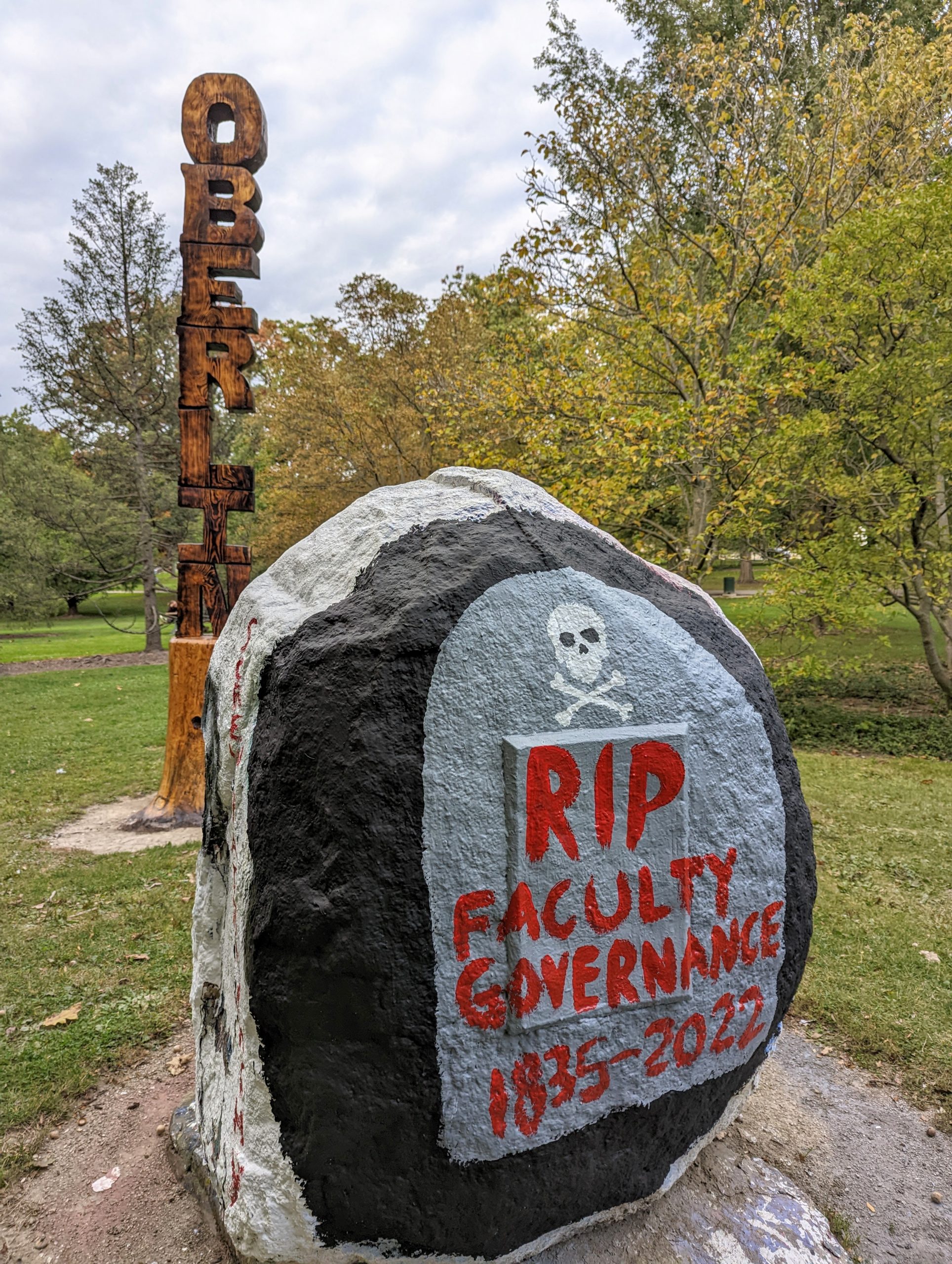Posted Feb 23, 2020 at 16:09. Revised Jun 10, 2021 at 09:05.
Contents — Psychoanalyzing the BOT
Visit OberlinChaos Clubhouse to see the latest posts and developments.
Aphabetical Index of all Posts
Random index of All Posts.

 A Jungian take on the BOT from ChaosFarm
A Jungian take on the BOT from ChaosFarm
OberlinChaos has promised for some time to deliver content addressing the more substantial picture surrounding the FUBAR mess with Gibson’s Bakery, the UAW, OSCA (The Oberlin Student Cooperative Assn.), and the problems with cutting costs in crazy ways. It is as if the entire BOT is going through an extreme midlife crisis and is clueless that this is happening.
Let’s take a look at the psychological state of the Board of Trustees and how it could explain their marathon stupidity. They are certainly not stupid people; they only act like they are.
Many people have been exposed to the people understanding concepts contained in the Myers-Briggs Type Indicator. The MBTI is a useful psychological tool for understanding people even though it has earned a bad name in some quarters due to many of its practitioners not having read the MBTI manual!
JD has been trained in using this tool and thinks some conjecture about how it might apply to the situation with the BOT would be enlightening. At the most elementary level, the purpose of the Myers-Briggs Type Indicator is to help people better understand the differences between people and see the benefits that come from those differences.
 What the MBTI is and is not
What the MBTI is and is not
The MBTI is a psychological indicator, not a diagnostic test. The MBTI should not be used to diagnose psychological problems because it only explains and describes people. It does not judge them or make psychiatric diagnoses.
The indicator was derived from the ideas contained in Carl Jung’s psychoanalytic model. Jung was quite concerned about how the incomplete psychoanalytic information presented by the MBTI could be misused and trivialized. Therefore, let’s look at how we can apply these ideas to the BOT without going too far into the mud.
The diversity between people is critical to the survival of the species because another part of the community can handle situations that might seriously challenge one part of the population, so the species survives.
One of the greatest fallacies among people is presuming that everybody else is just like they are. There are similarities, to be sure, but the differences can be vast. To put it in simple terms, different people look at different things differently. Understanding these differences can be quite helpful in understanding how to best harness different people’s skills.
Some of Jung’s ideas came from China
Jung realized his idea of the makeup of the mind matched the Chinese concept of Yin and Yang. This concept sees the world as made up of pairs of opposing forces that generally work together but sometimes conflict. When the opposing forces conflict, one force must be stronger than the other to resolve the dispute.
The Chinese concept is very different from Western thought, which assumes that the world is controlled by cause and effect sequences.
The one Jungian dichotomy (a pair of interconnected opposites) is the thinking-feeling dichotomy. Feeling here does not mean feelings and emotions but empathy and understanding of a situation and deciding what to do about it based on the importance of people. Feeling used here is a bad translation of a German word that does not have a counterpart in English.
The thinking half of this dichotomy is used to make decisions that involve logic and analysis without regard to the impact on people. Hence, the stronger thinking part will tend to be logical and analytical first and empathetic second. People having a more robust feeling half of the dichotomy will be primarily empathetic and use facts and logic second.
The MBTI teaches that when one half of a dichotomy ignores its other half, the weaker half will rebel. When the rebellion gets strong enough, the weaker half overpowers the stronger half in very dictatorial and nasty ways.
What the BOT did not learn from Jung
At this point, you can see where these ideas are headed. The way the BOT has dealt with the Gibsons, the more recent cost control problems, and dealing with the union is psychologically unhealthy. The SJW crusade of some on the BOT has lost contact with what it takes to mount a realistic campaign for doing social justice work. The crusade has been based almost exclusively on the feeling dimension and has ignored the facts and logic of the thinking dimension.
It has become quite apparent to JD that the BOT has a group of controlling people who have the thinking half of their thinking-feeling dichotomy grabbing tyrannical power from the feeling half. This is consistent with the BOT’s recent penchant for pathologically unliberal, reactionary thinking.
The evidence at the Gibson trial showed that the College was off the deep end in its accusations against the Gibsons. The College did not seek accommodation, which the stronger feeling half of the thinking-feeling dichotomy would want to do. The feeling part was overpowered by thinking that he was angry over being ignored. The college’s defense was based almost exclusively on hearsay evidence, which is not factual evidence and is not admissible in a court of law.
It is unclear if the College authorities made any effort to sit down and work with the union to reduce costs rather than just announcing they were taking an ax to everything. The union claims that the college’s position has been to shoot first and negotiate later.
Calibrating moral compasses
Another useful way to look at this situation is to think of the two halves of the thinking-feeling dichotomy as needing to be partners in calibrating a person’s moral compass. The compass will only calibrate when there is some understanding and compassion for the people involved and engaging in hard thinking and logic.
Calibration must be done against facts and realities in the world outside the person’s head and not just against internal moral precepts. At this juncture, the Oberlin college BOT is navigating with an uncalibrated moral compass that has no external calibration points.
The Gibson’s bakery mess happened because some very self-righteous people on the BOT did not allow their strong feelings on the false accusations against the Gibsons to stand the test of thinking and logic. The result: a colossal mess for everybody involved.
It appears that in the case of T. Christopher Canavan, the chairman of the BOT, he has a very dominant feeling and compassion component in his thinking-feeling dichotomy. For whatever reason, he has been consistently unable to allow the thinking part of his thinking-feeling dichotomy to have a say and help bring some sanity to his actions.
For those out there who might be MBTI aficionados, JD will conjecture that T. Christopher is a Myers-Briggs INFP. Assuming that JD’s conjecture is correct, seeing T. Christopher style his name with only his first initial and full middle name is very psychologically intriguing.
Emotionally challenged bosses cause unions
In JD’s opinion, there are unions at the college in the first place is that many years ago, the workers finally had a belly full of arrogant people looking down their noses at them and treating them like dirt. Treating workers like dirt will produce a nasty union in an organization much faster than will low pay or suboptimal working conditions. See Elitism Wrecks 2 Organizations.
Top of page and table of contents.
Aphabetical Index of all Posts
Random index of All Posts.
Send feedback, suggestions, or objections
Copyright © 2018-2024 Charles E. Dial. All rights reserved.










